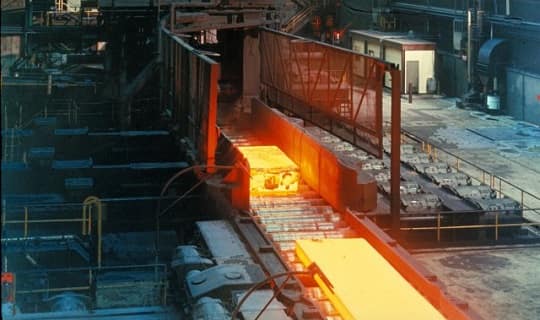India’s iron and steel industry overtook Japan to become the second largest steel producer in 2019. In 2018, the country’s crude steel production reached 106.5 tonnes, an increase of 4.5% over 2017. This industry employs about 25 lakh workers in steel/allied sectors and contributes to about 2% of the country’s GDP. Check out the information below to know more about how the iron and steel industry impacts the GDP and growth of the country.
Iron and Steel Industry in India – Overview
- India is the third largest finished steel consumer in the world after China and USA and is the largest producer of sponge iron in the world.
- In 2017, the per capita finished steel consumption has been pegged at 212 Kg for the world, 69 kg for India, and 523 kg, as per the World Steel Association.
- The world crude steel production arrived at 1789 Million Tonnes at the global level in 2018.
- The Indian government has taken initiatives to enhance the sector, including the beginning of the National Steel Policy 2017. The government also allows 100% FDI in the steel sector under an automatic route.
- Expansion in the Indian steel sector has been stimulated due to cost-effective labor and the availability of raw materials like iron ore. As a result, the steel industry has been a major contributor to India’s manufacturing output.
Iron and Steel Industry in India – Comprehensive Information

Undoubtedly, the per capita intake of iron and steel is one of the essential measures of a country’s economic development and industrialization.
Factors localizing the Indian Iron and Steel Industry
- Availability of Raw Materials
The iron and steel industry completely depends on raw materials with heavy weight and heavy losses. And the availability of raw materials primarily governs its localization. Iron and coal are the two major raw materials used by the region and are based on low transportation costs.
Most of the steel plants are located at 3 different locations- near iron ore mining centers, near coal fields, and in between areas of coal and iron ore production. Some of the famous iron and steel plants are located in different parts of India such as Bhilai, Durgapur, Bumpur, Jamshedpur, Bokaro, etc.
Other materials used in the Iron and Steel Industry include dolomite, chromite, limestone, silica, etc. These are raw materials that can be transported easily and are used in small quantities. Therefore, they don’t substantially affect the localization of this sector.
- Availability of Market
The presence of the market has also influenced the localization of the iron and steel industry. Steel products made from integrated steel plants are heavy and cannot be transported easily, costing per tonne kilometer which is three times more than that of iron or coal. Hence, the transportation cost related to iron and steel production tends to be influenced by the market.
Growth of the Indian Steel & Iron Industry
The economic reforms undertaken by the Government of India since 1991, added new dimensions to the steel industry in particular and industrial development in general. The government eliminated and removed restrictions on external trade and import duty.
Barring some local restrictions, the license for the steel industry was removed from the list of industries reserved for the public sector. The policies approved by the Government of India like convertibility of rupee on trade account, reduction in import duty on capital goods, and much more benefited the steel industry.
Benefits of the Indian Steel and Iron Industry
Some of the notable benefits of the Steel and Iron industry of India are as follows:
- Increasing Investments
Indian Iron and Steel Industry is observing consolidation of players, which has led to financial support by individuals from other sectors. The constant gathering also offers employment opportunities for international people to enter the Indian market.
- Vigorous Demand
India’s finished steel intake is targeted to enhance to 230 Million Tonnes by 2030 to 2031 from 86.3 Million Tonnes in FY 2012. India was the world’s 2nd largest producer of crude steel with a raw material of 9.8 Million Tonnes as of October 2021.
- Competitive benefit
India was the world’s 2nd largest manufacturer of crude steel with a raw material of 9.5 Million Tonnes as of September 2021. Due to the presence of abundant iron ore reserves and low-cost manpower, India has become internationally competitive. It also houses reserves of iron ore and is positioned 5th highest reserves in the world.
- Government Support
The Indian government announced rules & regulations for the authorized specialty steel PLI scheme in October 2021. The government also funded Rs 47 crore to the Ministry of Steel under the Union Budget 2022 to 2023.
History of the Indian Steel and Iron Industry
India was the first country to manufacture metals, as early as 1600 BCE, according to Archaeologists and Historians. Though this sector did not come into existence in India until the year 1907. In the early years of 1800, the establishment of iron and steel units was actively started. The first attempt was done by the East India Company in 1808, and the second was made by Marshall Heath in 1830 which was shut down in 1860. The iron and steel industry got its start with the establishment of the TISCO plant in Jamshedpur in 1907.
Conclusion
Today Indian Iron and Steel Industry has proved to be the forerunner of globalization, and one of the few industries that have witnessed Indian development. Subsidiary industries like locomotives, automobiles, dams, machine building, ship-building, and commercial solely dependent upon the iron and steel sector.
Santosh Kumar, the author behind IndiasStuffs.com, is passionate about sharing valuable insights on a variety of topics, including lifestyle, technology, and Indian culture.
Page Contents

